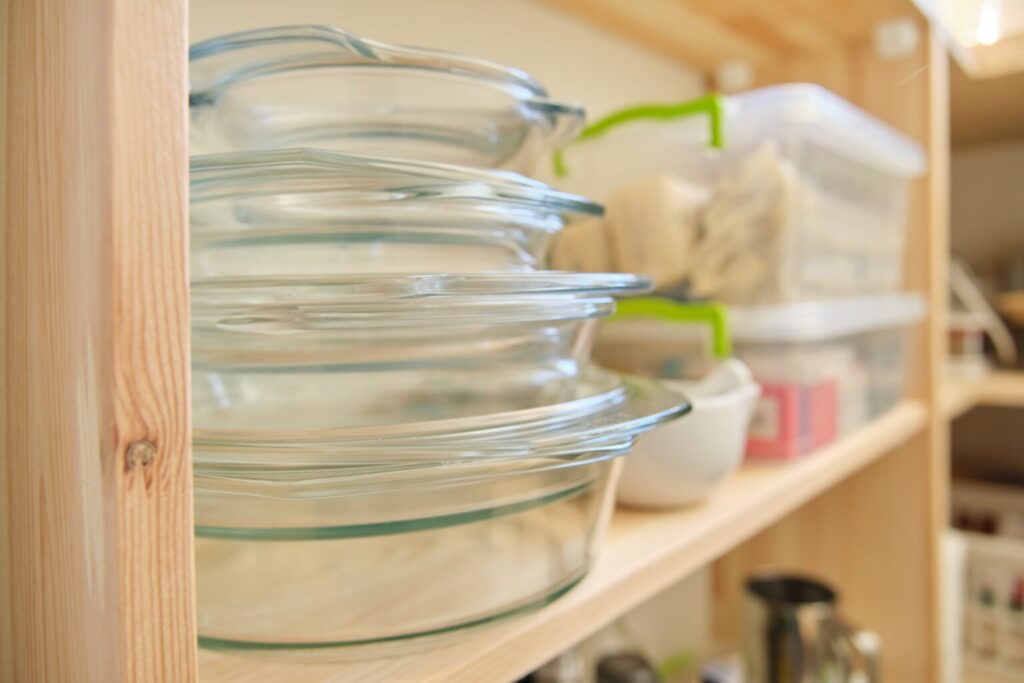An organized pantry can save the average household anywhere from $1,500 per year by eliminating food wastage and redundant purchases. Aside from cost savings, a tidy pantry revolutionizes your cooking experience, saving you time and effort spent in the kitchen. We’ve all gone through the agony of hunting for ingredients hidden behind cans of out-of-date items or struggling with a snowdrift of items when looking for just one thing.
In this ultimate pantry makeover guide, we’ll take you through the step-by-step process of turning your cluttered pantry into a functional, beautiful space that will make your kitchen life far more convenient.
Step 1: Decluttering – The First Step to a Clean Pantry
Before we get to organizing, we must begin with a blank slate. Decluttering is key to building a pantry system that truly functions for your family.
“Begin by clearing everything out of your pantry,” advises professional organizer Naeemah Ford Goldson. This step is always really eye-opening because it makes you see the entirety of what you have, which is always more than you realize!
As you take out items, use three separate lists: keep, donate, and discard. Take no mercy on expired products – in the opinions of food safety professionals, several items deteriorate long before reaching their “best by” labels.
Look for:
- Products well beyond their dates
- Almost bare containers of little-used items
- Food products that you bought but never actually employed (be sincere with yourself!)
- Duplicates you hadn’t known that you had
This method assists you in determining what you truly need and utilize on a regular basis. A clean pantry begins with having only what caters to your lifestyle and eating habits at present. For food still edible but not likely to be consumed in your home, donate to food banks in your area to save from waste while assisting others, making room for the best foods to eat that actually support your health and daily meals.
Step 2: Deep Cleaning Your Pantry Shelves
Once your pantry has been emptied, the time is right for some thorough cleaning. We find it best to begin at the top and then work your way down because dust and debris will naturally drop onto lower surfaces.
- First, vacuum with a hose attachment to get rid of crumbs, dust, and cobwebs in corners and crevices. Then, mix up a cleaning solution with warm water and an all-purpose cleaner – roughly one tablespoon of cleaner to a small bucket of water. For a natural option, combine one part vinegar with two parts water.
- Second, soak a microfiber cloth in your solution, wring it until it’s not dripping, and wipe down every shelf carefully. Be sure to pay extra attention to sticky spill residue. For tough spots, allow your cleaning solution to sit for a few minutes before wiping.
- Don’t miss cleaning the wall, door, and floor of your pantry area. In case you see some mold or mildew, disinfect the area with a disinfectant solution according to label instructions.
After everything is dry and clean, think about using shelf liners – they will make your future cleaning easier and keep your shelves safe from spills and stains.
Step 3: Smart Shelf Organization Strategies

Organization is more about designing intuitive systems that work for the way you function in your kitchen. Instead of organizing by container size, we suggest grouping similar items by category or “zones.”
“Stacking things together that are roughly the same size and shape might save space, but it won’t enable you to find what you need quickly when you need it,” says Goldson. “Stack your edibles instead into themed groups.”
Here’s how to organize your shelves for maximum efficiency by dividing them into categories:
- Baking supplies (flour, sugar, baking soda)
- Breakfast items (cereal, oatmeal, pancake mix)
- Pasta and grains
- Canned goods (sorted by type)
- Snacks
- Condiments and sauces
Invest in clear containers for items like pasta, rice, cereal, and baking supplies. This approach not only creates a visually appealing pantry but also extends food freshness and makes it easy to see when supplies are running low.
Labeling is important – even with transparent containers, labels assist everyone in the home in keeping the system intact. Utilize a label maker or plain masking tape and a marker to clearly label contents and expiration dates.
Step 4: Maximizing Small Pantry Spaces
Not everyone can afford a walk-in pantry, but even the tiniest areas can be extremely functional with the right mindset. The solution lies in going vertical and making every inch count.
Place stackable shelf organizers to double your usable surface. These metal or plastic inserts create instant extra layers of storage without the need for renovation. Door-mounted organizers provide another space-saving option ideal for spices, oils, or small packaged goods.
“For items wrapped individually, such as granola bars or juice boxes, utilize baskets. For loose foods like flour or cereal, utilize canisters,” recommends professional organizer Rose Lounsbury.
Consider these other space-saving techniques:
- Use lazy Susans in corner areas to cut down on unreachable “dead zones.”
- Add pull-out drawers for easier access to deep shelves
- Hang the most-used tools inside the cabinet doors
- Make use of adjustable shelf heights to store items of varying sizes
- Group rarely used specialty items in the upper or lower shelves
Keep in mind that visibility is usability. Products abandoned at the rear of deep shelves tend to expire before being used, leading to food waste and inefficiency.
Step 5: Maintaining a Clean and Organized Pantry
Putting a gorgeous pantry together is one success – keeping it up is a different story. We suggest taking a few simple steps to sustain your pantry order in the long term.
Keeping your pantry clean and organized with a speedy 10-minute process every week:
- Put misplaced items into their correct spots
- Clean up any sticky shelves or spills
- Bring back stock to the front based on freshness dates
- Write down low-on-stuff stuff for your grocery list
Do a deeper clean every quarter, which professionals suggest doing with the change of seasons. This involves ensuring expired products are removed, cleaning shelves, and re-evaluating your organization’s method.
You must clean your pantry a minimum of four times a year when the seasons change. At least try to do it twice every year.
Implement a “first in, first out” system where newer products go behind older ones so that older products are used up before they expire. This easy habit significantly minimizes food waste and keeps your tidy pantry running at peak performance.
Vella’s Expert Cleaning Services: How We Can Help
While these DIY methods will reshape your pantry, sometimes professional hands do make a difference. Our professional housekeepers at Vella realize that a spotlessly clean pantry is more than exterior appearances. Our thorough cleaning procedures guarantee that all areas of your kitchen, pantry areas included, are given careful attention.
Our housekeepers utilize non-toxic, eco-friendly cleaning materials that are good at their job without being harmful in food storage spaces. When you choose Vella, you have no need to worry that your pantry will be cleaned by products that value your health as well as the planet.
When in doubt, call Vella to organize your pantry. We extend our services across Texas, including areas such as Dallas, Austin, and Fort Worth.

Organize Pantry Like a Pro
An organized pantry is not only an aesthetic decision – it’s a practical approach to minimizing food waste, saving money, and streamlining meal preparation. By reading our step-by-step guide, you can turn this important area in your kitchen from a source of frustration into a source of pride.
Keep in mind that organization systems do best when they are tailored to your home’s particular needs and routines. The ideal pantry isn’t always going to be the one with coordinated containers and immaculate labels (although those are nice!) – it’s the one that works in harmony with your life.
Ready to give your whole kitchen the next level of clean? We’re here to assist. Find your ideal clean with Vella’s outstanding housekeeping services that leave more than a fresh aroma – they leave a lasting memory.
